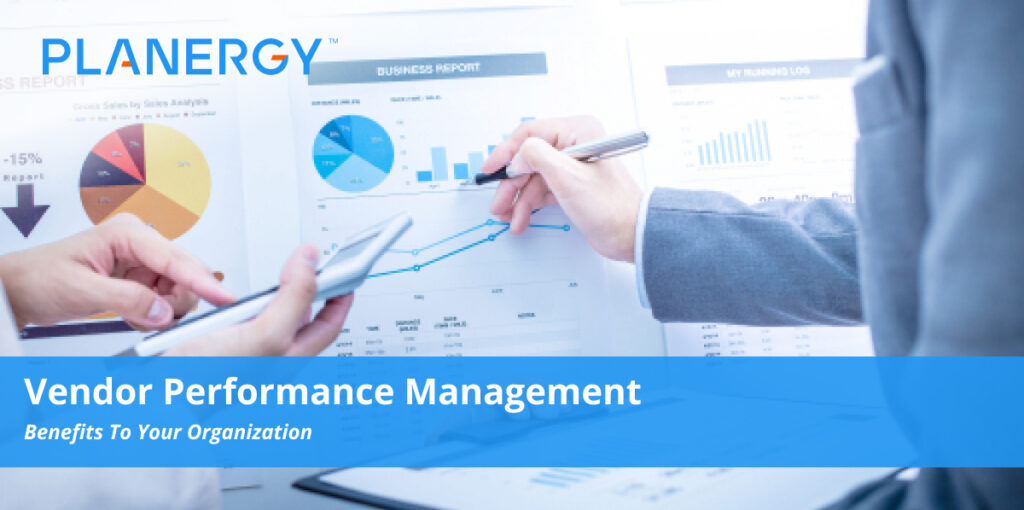When’s the last time you or someone else on your company’s procurement team took a look at the number of vendors in your system?
Do you know right off the top of your head how many vendors your company is actively using on a regular basis?
Are you getting the best possible deal for the products and services you’re buying?
Are you constantly running into issues with the same vendor?
For your organization to be a success, it must have positive working relationships with all the vendors and suppliers you partner with.
Choosing the wrong suppliers or failing to manage them effectively cost your business a significant amount of time and money.
Vendor Performance Management
Vendor performance Management (VPM), sometimes also referred to as supplier performance management (SPM), is the practice of monitoring and analyzing the quality, performance, and reliability of your vendors.
Monitoring vendor performance allows your company to improve efficiency and profits by reducing stock levels and inventory costs. Proper vendor performance management also helps to increase customer satisfaction.
The challenge lies in being able to effectively monitor all of the active vendors across the organization.
Doing so requires constant real-time information about how the vendor is performing, formal procedures, and two-way communication between you as the buyer and all vendors you are making purchases from.
Thankfully, technology is available to help bridge the gaps so you can create a system that keeps an eye on how your vendors are affecting your business while also continuing to operate smoothly.
How is Vendor Performance Measured?
Vendor performance management is usually managed with a series of key performance indicators (KPIs). These KPIs are agreed upon and set forth in the contract between buyer and seller.
Most management solutions use dashboards or balanced vendor scorecards to measure supplier performance.
Common KPIs used include:
- Payment terms
- Prices
- Quality of products
- Frequency of price changes
- Delivery lead times
- Vendor financial stability
- Competitiveness with other vendors
- Communication lag times
- Breakages
- Under and over deliveries
The KPIs you choose should be suited to your industry and the ones that are most relevant to you.
With the balanced scorecard method, your organization looks at a number of weighted metrics across four areas:
- Delivery
- Quality
- Relationship
- Cost management
Each organization has different ideas as to how much weight to place on each element.
You can examine the metrics individually or as a group to provide a full view of the vendor.
Benefits of Vendor Performance Management
When your organization starts to manage vendor performance, you’ll find more than cost savings.
Vendor performance management can generate ideas for continuous improvement in terms of products and services. It also helps with risk management by lowering your overall risk exposure.
Streamlining your administrative processes can save you and the suppliers you work with money.
By identifying the root causes of issues to solve them quickly, it’s reasonable to expect higher levels of customer satisfaction.
When an organization has little to no focus on managing performance, every action is reactive and unlikely to help improve delivery.
If no one agrees on measurements or tracking what has gone well or what failed and why, the chances of improving it are low. This strains vendor relationships and could cause issues that ripple throughout the supply chain.
For the greatest chance of vendor management success, all stakeholders should be aware of the evaluation process, criteria, and timing. This way no one is surprised when results are tabulated. Remember, process improvements can only occur if evaluation reports are communicated to both the vendor and the purchaser and both parties agree to act upon them.
Vendor Segmentation
Part of successful vendor performance management lies in vendor segmentation.
Some of your vendors are more crucial to your business than others and as such require a higher level of attention and engagement.
By segmenting your vendors with pre-agreed upon criteria and makes it easier to decide on the appropriate level of attention they require to ensure they deliver quality products and services.
For your mission critical products and services, or the ones that will cause your business to cease operations if you must go without, you know you need a high level of attention and a strong relationship with those vendors.
Paying attention to their performance is necessary so that if you run into any problems, you know you can confidently take action to eliminate those issues before they have a chance to make it major negative impact on your bottom line.
For instance, if you find your number one supplier of your main product is consistently failing to deliver on time, it may mean it is time for the procurement team to start evaluating new potential suppliers to work with.
Segmenting your vendors also allows you to tailor your efforts and resources to identify the vendors that can help you create a competitive advantage.
It helps you see why each vendor you work with is important to your business operations.
You may find that you have an extensive list of vendors that you no longer work with or find the vendor that you need to focus more attention on because they offer a better deal for your company than the vendor you’ve been working with for the past year.
Having your vendors segmented for performance management makes it easier for you to develop a stronger working relationship with key vendors across many levels including operational, transactional, and executive. It also helps you spot risks and find ways to reduce your exposure to said risks.
For instance, if after combing through your vendor database you find you only have a single source of supply for your critical goods and services, you are at high risk because failure with this vendor at any time could cause a major disruption to your operations and impact your customer satisfaction.
When implemented properly, vendor performance management improves performance for both the purchaser and the supplier.
By increasing contract compliance, improving quality, lead times, responsiveness, and other major KPIs, you’ll see higher profits and ultimately be able to serve your own customers better.




